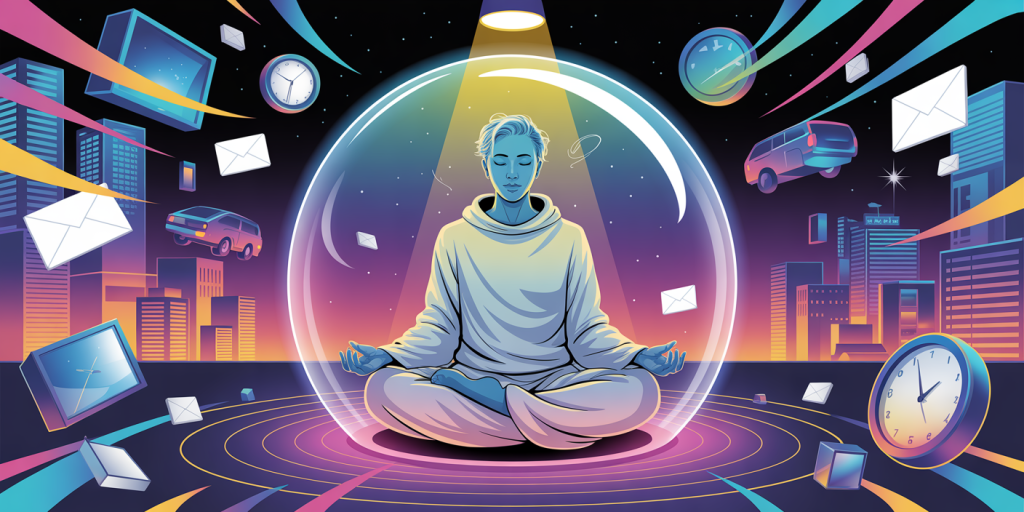From Burnout to Balance: How to Protect Your Energy Without Sacrificing Results
In a society that glorifies hustle culture, overachievement, and 24/7 productivity, burnout has become a silent epidemic. Professionals across industries are pushing themselves to their limits in an attempt to keep up—only to find themselves exhausted, unmotivated, and disconnected. The idea of balance often feels like a luxury or, worse, a weakness.
But here’s the truth: burnout doesn’t mean you’re weak—it means you’ve been strong for too long without rest. And the good news is that you don’t have to choose between well-being and performance. You can protect your energy and still achieve powerful results. This article will show you how.
🔥 Understanding Burnout: More Than Just Tiredness
Burnout isn’t simply feeling tired after a long day. It’s a chronic state of physical, mental, and emotional exhaustion caused by prolonged stress. It’s what happens when your output consistently exceeds your input—when you give more than you replenish.
The Three Core Symptoms of Burnout:
- Emotional Exhaustion – You feel drained, unmotivated, and unable to cope.
- Depersonalization – You begin to detach, becoming cynical or indifferent toward work or others.
- Reduced Personal Accomplishment – You feel ineffective, unproductive, and question your abilities.
Left unaddressed, burnout can lead to anxiety, depression, insomnia, and even physical illness. It doesn’t just impact your health—it erodes your creativity, performance, and relationships.

⚖️ The Myth of “More Hours = More Results”
One of the most damaging beliefs fueling burnout is that working more hours automatically leads to greater success. But research shows the opposite:
- Productivity drops significantly after 50 hours of work per week.
- After 55 hours, there are virtually no gains in output—but a sharp rise in stress and health issues.
- People who take regular breaks and vacations are often more productive and creative than those who don’t.
The real secret to sustainable success? Working smarter, not harder. This starts by managing your energy, not just your time.
🌱 Protecting Your Energy: Strategies That Work
1. Redefine Productivity
We tend to equate productivity with “doing more.” But real productivity is about doing what matters most, with focused energy and clarity.
Ask yourself daily:
- What are the top 3 tasks that will move the needle today?
- Am I being busy, or am I being effective?
Use frameworks like Eisenhower Matrix or Pareto Principle (80/20 Rule) to prioritize high-impact tasks and eliminate the rest.

2. Set Boundaries Like a Pro
One of the biggest contributors to burnout is the lack of boundaries—especially in remote or hybrid work settings where home and work blur.
How to set effective boundaries:
- Define clear start and end times for your workday.
- Use “Do Not Disturb” modes on devices.
- Learn to say no without guilt by offering alternatives or scheduling future times.
- Schedule non-negotiable breaks, even short ones.
Remember: Every time you say “yes” to something, you’re saying “no” to something else—often your own well-being.
3. Create Energy Rituals Throughout Your Day
Your energy ebbs and flows. Instead of fighting it, work with your natural rhythms.
- Start with intention: Begin your day with a grounding ritual—journaling, stretching, or mindful breathing.
- Work in sprints: Use methods like Pomodoro (25 mins work / 5 mins rest) to boost focus and avoid fatigue.
- Move your body: Even 5 minutes of walking, stretching, or dancing can reset your energy.
- Recharge with “micro-rests”: These are brief moments of pause—looking out the window, sipping tea mindfully, or doing deep breaths.
You don’t need an hour at the spa to feel recharged. You just need consistent, intentional micro-recoveries.
4. Manage Your Inner Dialogue
Burnout isn’t only about workload—it’s also about the stories you tell yourself.
If your inner voice says:
- “I can’t stop or I’ll fall behind.”
- “Rest is lazy.”
- “I have to prove myself.”
…then burnout becomes a self-fulfilling prophecy.
Instead, reframe:
- “Rest is a strategy, not a reward.”
- “I get more done when I take care of my energy.”
- “I can be successful without being available 24/7.”
Your mindset directly affects how you allocate energy. Guard it fiercely.
5. Use Technology Wisely
Ironically, the very tools meant to help us work better often drain us.
Tips to use tech without burning out:
- Turn off notifications except for essential apps.
- Use website blockers (like Freedom or Cold Turkey) during deep work.
- Try time-tracking apps (like Toggl) to identify energy leaks.
- Automate repetitive tasks to conserve brainpower.
Let tech be your assistant, not your master.
6. Protect Your Sleep Like It’s Sacred
Sleep is the ultimate energy reset. No productivity hack can replace what 7–9 hours of quality sleep does for your brain and body.
To improve sleep:
- Keep a consistent schedule—even on weekends.
- Avoid screens an hour before bed.
- Use relaxation rituals like reading, journaling, or listening to calming music.
- Make your bedroom a restful space, not a second office.
Sleep isn’t optional. It’s the foundation of resilience and mental clarity.
7. Reconnect with Purpose
When you’re working without a sense of purpose, every task feels like a drain.
Take time to reflect:
- Why did you start doing this work?
- Who are you helping?
- What values do you want your work to reflect?
Sometimes burnout isn’t caused by doing too much—it’s caused by doing too much of the wrong things. Realignment can restore your energy faster than any vacation.
8. Ask for Help Without Shame
There’s strength in admitting you’re overwhelmed. Whether it’s:
- Delegating tasks
- Communicating with your boss
- Seeking therapy or coaching
- Talking to a friend or partner
Asking for support can provide the perspective and relief you need to regain balance. You don’t have to carry it all alone.
🧭 Creating Your Own Balance Blueprint
Everyone’s version of balance looks different. Some thrive on structured routines, others need flexibility. What matters most is that you define balance on your own terms, based on your needs and values.
Here’s how to start:
- Audit Your Energy
Track your energy highs and lows throughout the day and week. Identify tasks that drain or energize you. - Eliminate or Delegate Energy Drains
Wherever possible, reduce time spent on unnecessary obligations. - Add Energy-Giving Habits
Include more of what fuels you—connection, learning, movement, rest. - Protect Your Recharge Time
Block time for yourself as seriously as you would a meeting.
Balance isn’t about achieving perfect harmony every day. It’s about consistently returning to center, adjusting when needed, and remembering that you are not a machine.
🌟 Final Thoughts: The Power of Sustainable Success
Burnout steals your joy, your health, and your creativity. But balance gives you room to breathe, think, create, and thrive. You don’t need to sacrifice your results to protect your energy—in fact, when you do protect your energy, your results often improve.
The next time you feel pulled to do more, remember:
- Saying no can be a step toward greater impact.
- Slowing down can help you speed up with purpose.
- Rest isn’t quitting. It’s preparing for what’s next.
From burnout to balance is not a one-time leap—it’s a practice. And with the right mindset and tools, you can build a life where performance and well-being coexist beautifully.
